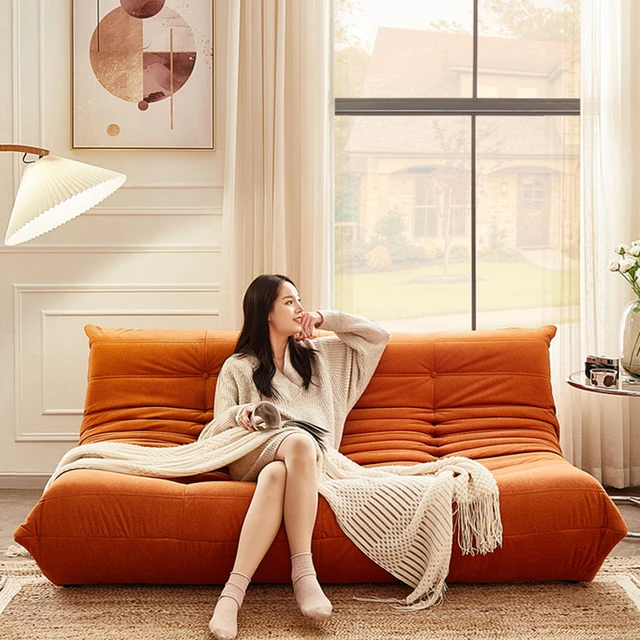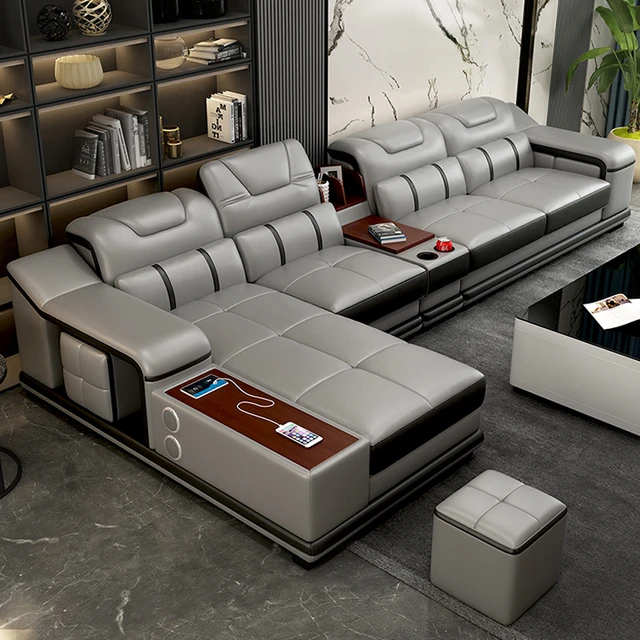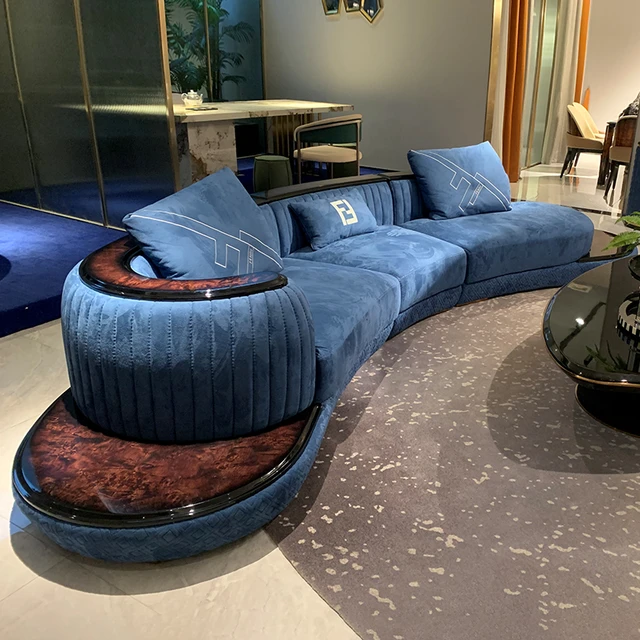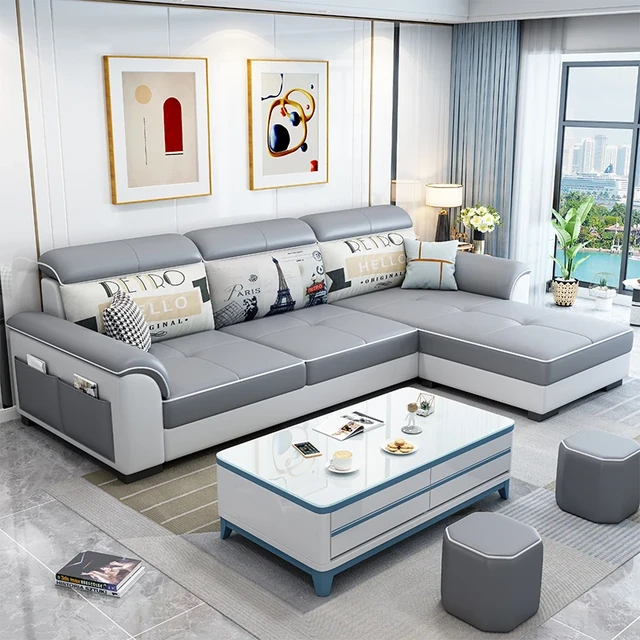 Introduction:
Introduction:
When it comes to choosing a sofa, one of the key decisions to make is whether to opt for leather or fabric upholstery. Both options have their own unique benefits and considerations. In this comprehensive guide, we will explore the differences between leather and fabric sofas. From durability and maintenance to comfort and style, this guide will examine various aspects to help you make an informed decision and choose the best sofa upholstery for your needs and preferences.
 Leather sofas can come in various seat configurations, including:
Leather sofas can come in various seat configurations, including:
Single-seater: These are small leather armchairs designed for one person.
Loveseat: These leather sofas typically have two cushions and provide seating for two people.
Three-seater: These are larger leather sofas with three cushions, offering seating for three people.
Sectional: Leather sectional sofas consist of multiple pieces that can be arranged in different configurations, such as L-shape, U-shape, or modular designs. They can accommodate more people and often have a chaise lounge or recliner options.
As for current trends in leather sofas, here are a few popular ones:
Minimalist and modern: Clean lines, sleek designs, and neutral colors are on-trend for leather sofas. Minimalist styles with streamlined shapes and minimal embellishments are favored.
Vintage and distressed: Vintage-inspired leather sofas, particularly those with a distressed or aged appearance, have gained popularity. These sofas often have a worn-in look, showcasing the natural patina and character of the leather.
Dark and rich tones: Deep, dark shades like black, espresso, or charcoal are popular choices for leather sofas. These colors add a sense of sophistication and elegance to a space.
Mixed materials: Leather sofas with a combination of leather and other materials, such as fabric or wood accents, are gaining popularity. These mixed material designs add visual interest and allow for more customization options.
Statement details: Current trends in leather sofas include unique details like tufting, nailhead trim, or decorative stitching. These features add a touch of elegance and individuality to the sofa.
Ultimately, the choice of leather sofa configuration and design depends on personal preferences, available space, and the overall style of the room. It’s essential to consider the longevity, comfort, and maintenance requirements of the leather sofa when making a purchasing decision.
 Here are some current trends in fabric sofas:
Here are some current trends in fabric sofas:
Fabric sofas have a wide range of design options, and their popularity can vary over time. Here are some current trends in fabric sofas:
Neutral tones:
Neutral colors like beige, gray, and white remain popular choices for fabric sofas. These colors create a versatile and timeless look that can easily blend with various interior styles.
Textured fabrics:
Fabrics with texture, such as tweed, boucle, or chenille, are gaining popularity. These textured fabrics add depth and visual interest to the sofa and can create a cozy and inviting atmosphere.
Bold patterns:
While neutral colors dominate, there is also a trend towards bold patterns on fabric sofas. Patterns like geometric designs, florals, or abstract prints can make a statement and add a touch of personality to the living space.
Sustainable and natural materials:
With increasing environmental awareness, there is a growing demand for fabric sofas made from sustainable and natural materials. Organic cotton, linen, and recycled fabrics are becoming more popular choices for eco-conscious consumers.
Mid-century modern style:
The mid-century modern aesthetic continues to influence furniture design, including fabric sofas. Clean lines, slim legs, and retro-inspired patterns are common features of fabric sofas in this style.
Modular and sectional designs:
Modular and sectional fabric sofas provide versatility and flexibility in arranging the seating configuration. These designs allow for customization according to the specific needs and available space.
Mix and match:
Mixing different fabrics or combining fabric with other materials, such as leather or metal accents, is a trend in fabric sofa design. This adds visual interest and creates a unique and personalized look.
Ultimately, the choice of fabric sofa style depends on individual preferences, existing decor, and the desired overall look and feel of the living space. It’s important to select a fabric that is durable, easy to clean, and appropriate for the intended use to ensure long-lasting satisfaction with the sofa.
 Durability and Longevity
Durability and Longevity
Leather sofas are known for their durability and longevity.
High-quality leather is resistant to wear and tear, making it less likely to show signs of aging over time.
Fabric Sofas:
The durability of fabric sofas depends on the type of fabric used.
Certain fabrics, such as microfiber or performance fabrics, can be highly durable and resistant to stains and fading.
Maintenance and Cleaning
Leather sofas are relatively easy to clean and maintain.
Regular dusting and occasional conditioning can keep the leather supple and prevent it from drying out.
Fabric Sofas:
Cleaning fabric sofas can be more challenging, especially if they are made of delicate or non-removable fabrics.
However, many fabric sofas come with removable and washable covers, which can simplify the cleaning process.
Comfort and Feel
Leather Sofas:
Tend to have a luxurious and smooth feel.
Leather upholstery can adapt to body temperature, providing a comfortable seating experience.
Fabric Sofas:
The comfort of fabric sofas depends on the specific fabric used.
Fabrics such as velvet, chenille, or microfiber can offer a soft and cozy feel, while others may have different textures or cooling properties.
 Style and Design Options
Style and Design Options
Leather sofas are often associated with a classic and sophisticated aesthetic.
They can effortlessly add a touch of elegance and refinement to any room.
Fabric Sofas:
Fabric sofas offer a wide range of design options, from various colors and patterns to different textures and finishes.
With fabric sofas, you have more versatility in terms of matching the sofa with your existing decor and personal style.
Temperature and Climate Considerations
Leather can be affected by extreme temperatures, becoming hot and sticky in warm weather and cold and stiff in cold weather.
However, these temperature-related issues can be mitigated with proper maintenance and by keeping the sofa in a climate-controlled environment.
Fabric Sofas:
Fabric sofas are generally more breathable and can be more comfortable in hot or humid climates.
Fabrics that are moisture-wicking or have cooling properties can further enhance comfort in warm weather.
Cost Considerations
Leather sofas tend to be more expensive than fabric sofas, primarily due to the cost of high-quality leather and the craftsmanship involved in their production.
Fabric Sofas:
Fabric sofas are generally more affordable than leather sofas, as fabric materials are often less expensive and easier to source.
Conclusion:
Choosing between a leather or fabric sofa requires careful consideration of various factors, including durability, maintenance, comfort, style, and cost. While leather sofas offer durability, ease of maintenance, and a luxurious feel, fabric sofas offer a wider range of design options, comfort versatility, and affordability. By assessing your specific needs, preferences, and lifestyle, you can make an informed decision and choose the best sofa upholstery that suits your style, comfort, and budget. Whether you prefer the classic elegance of leather or the versatility of fabric, both options can provide a comfortable and stylish seating experience in your home.
